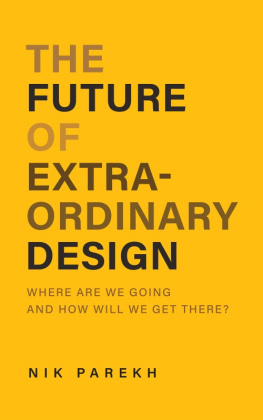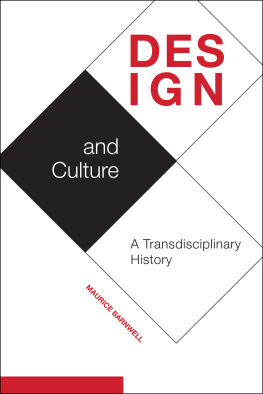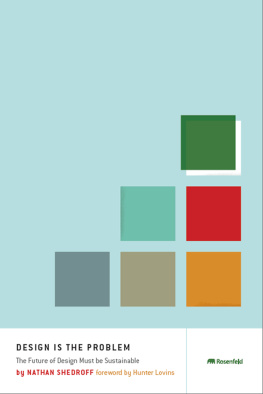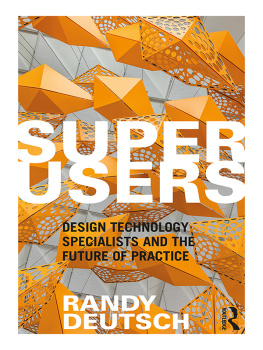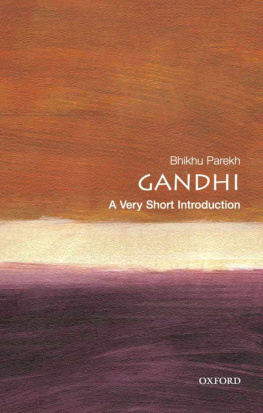TO PUDDY TAT
For being my best friend for the last 13 years. I miss you so much. Youll always mean the world to me.
TO MOM & DAD
For always challenging assumptions and teaching me to believe in whats right.
TO NADIA
For your encouragement, inspiring me to wait for the right things to come.
TO RAKHI
For all your love and support through the good, and the bad.
Every great design begins with an even better story.
- Lorinda Mamo
NOTE TO READERS
The conclusions I come to in this book are based on my studies and work experiences, including my reading in professional books and online. Youll notice I dont reference any specific examples of ideas, and this is simply because Im not looking to challenge any individual, only the thinking thats prevalent in our industry. So when I say, Many Americans think Im generalizing and possibly making an assumption, too. And youre free to disagree if you like.
Uber, McDonalds, and Starbucks are companies used as examples. My intention is not to challenge the company or the people behind it, but merely to question a few things.
Puddy Tat LLC
7905 N. Crescent Blvd. Pennsauken, NJ 08110
Cover and book design by Nadia Shaik
All Rights Reserved
ISBN: 978-1-5439956-1-9
WHERE ARE WE GOING AND HOW WILL WE GET THERE?
In this book, we look back at a century of design and revisit the stories behind big successes in service, design, and innovation.
We ask the big questions and challenge traditional and contemporary design thinking alike. By looking forward to the new design mavericks, we can see where weve been, where were going, and how best to get there.
SPECIAL THANKS TO
Nadia Sko
Jessica Karla
Vladimir Almonnord
Laura Salisbury
Payal Vaidya
Christopher Moore
Nadia Shaik
CONTENTS
NOTES
ABOUT THE AUTHOR
Nik Parekh is a design and strategy professional dedicated to championing community-driven design over human-centered design. He advocates taking the fifty-thousand-foot view approach, stepping back and looking at the whole picture to deliver a holistic and sustainable solution.
In the last decade, hes worked with many clients large and small across a range of industries, from banking to food platforms, and with big names such as Samsung, Delta, and Chase. An engaged public speaker and mentor, Nik has been writing articles on the subject of service design for several years.
He currently lives in San Francisco with his wife, Nadia. This is his first book.
NOTE FROM THE AUTHOR
Hello and thanks for buying this book. This is the first book Ive written on the subject of service design and thinking, but Ive been writing articles and blogs for several years. Anyone whos read my blogs knows Im a highly subjective writer, so anything expressed here should be taken as my personal opinion. I often use examples of big name brands to illustrate my point, and sometimes that point isnt too flattering. But please take these examples with a grain of salt. Im not saying the businesses or the people behind the brand are doing something wrong or that theyre bad at their jobs Im just illustrating one tiny aspect of this model that has come to my attention. Im using big name brands because more readers are aware of them and can picture the issue Im discussing. In most cases, I could probably use a hundred other examples, but this book only has so many pages.
The conclusions I come to in this book are based on my studies and work experiences, including my reading in professional books and online. Youll notice I dont reference any specific examples of ideas, and this is simply because Im not looking to challenge any individual, only the thinking thats prevalent in our industry. So when I say, Many Americans think Im generalizing and possibly making an assumption, too. And youre free to disagree if you like.
Finally, I have a favor to ask. This is my first book and Id appreciate your feedback.
Happy reading and thanks again,
Nik
/ INTRODUCTION
HOW TO DESIGN FOR THE FUTURE
I dont know if youve noticed, but every morning when you wake up, the world you greet is completely different from the one you saw the night before. You open your front door, step outside, and take in a lungful of air. Eight hours ago, that air was a hundred miles away, and in the cool of the night, particles have fallen from far above. Beneath your feet, roots have grown and insects have created tunnels. Moisture levels have changed and bacteria has lived and died. Look up and you may notice a neighbor has purchased new curtains, but behind those curtains, food has been eaten, children have painted original and unique pictures, and TV shows have changed the way a person views the world. And this is just in your neighborhood.
On your way to work, youll spot new billboards but not notice the new people who now live in your city. You wont know why theyve moved here or what lives theyve left behind. When you get to work, everything might look the same, but inside the heads of every single colleague, a dramatic change has taken place. Theyre not the same people they were yesterday theyve had new experiences and as soon as they sit down in front of their computers and start emailing or working, theyll start changing the world too.
So when people ask me how we can design for the future, I dont think theyre ready for the answer Im going to give them. Theyre imagining a future playing out along a naturally occurring, predetermined line, with their ideas and designs serving this future. But that future doesnt exist and never will. As Peter Drucker said (and perhaps Abraham Lincoln too), The best way to predict the future is to create it, and this is a logical concept. However, as service designers and product strategists, we dont just want to predict the future or create it. We want to make it better.
As service designers and product strategists, we dont just want to predict the future or create it. We want to make it better.
But in my time both as a student and later working across a range of technology and service business areas as a strategist and service and product designer, Ive come to realize a troubling element of our discipline: Too many thinkers are using models of the past to try to predict the future. The thinking is clear if this approach has worked before, surely it can work again. And yes, in many cases, it can. History is an important tool in our human societies. We (hopefully) learn from history. However, just because something has worked in the past doesnt mean it will work in the future.
Challenging certain concepts in design thinking, whether theyre new or old, is seen as rebellious. First, in design across all spectrums, we appear to have pillars of belief that must remain in place, but how does this fit with our role? Were asked to come up with novel and original ideas and solutions to clients problems, but were expected to find them using all the usual means. Second, were asked to design solutions that are unique and specific to the brief, but we tend to start suggesting answers almost as soon as the problem is presented (as if the brief was to solve the question as quickly as possible). Were expected to remain open-minded, but we jump on the newest trends in thinking, afraid of being the last one to climb aboard. Whenever a new concept comes to light, its immediately applied to every problem and design without considering whether its applicable (imagine every new medicine was applied to every disease; would that work?). And finally, the very areas where I feel design could have the most beneficial impact are the ones we ignore. We are told were not allowed into certain spheres of society, such as law and government, because were designers and not lawyers or politicians. But will this always be the case?


